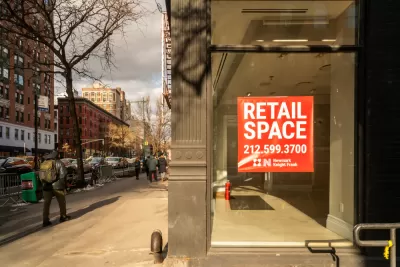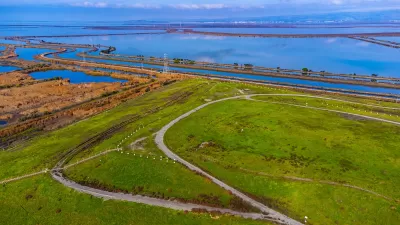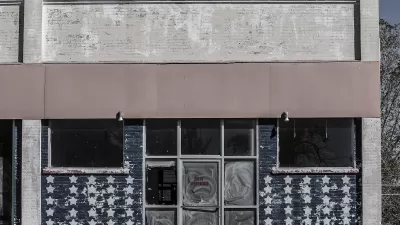With demand for housing growing and for physical storefronts waning, do the restrictions imposed by ground-floor retail zoning still make sense?

Zoning requiring ground-floor retail began as a way to activate street-level spaces and prevent sidewalks from becoming drab corridors marked by low-traffic uses. But as the demand for physical retail diminishes, David Morley, writing in the American Planning Association blog, comments that cities will need to adjust retail zoning to reflect that changing demand.
Citing Tom Smith’s article "Activating Ground Floors in Mixed-Use Buildings After COVID," Morley writes, “In Smith's view, there are only two logical responses: expanding permissible uses and downsizing retail-only corridors and districts.” Smith argues that cities could expand permitted uses by allowing offices and small-scale, clean industrial uses that could replace traditional retail.
Smith also tackles housing. “Perhaps the only universal feature of active ground-floor use requirements is that street-fronting ground-floor residences are prohibited.” Yet with the housing crisis raging out of control, would permitting housing in some ground-floor spaces be such a bad thing? “As Smith points out, the alternative is likely a permanent abundance of vacant storefronts, which does nothing to support the businesses that remain.”
Around the country, cities and developers are rethinking the role of commercial real estate like retail and office space. Buildings that once housed massive malls, often conveniently located near major transportation corridors, are now being converted to housing and mixed-use developments.
FULL STORY: How Should We Zone for Post-Retail Streets?

Maui's Vacation Rental Debate Turns Ugly
Verbal attacks, misinformation campaigns and fistfights plague a high-stakes debate to convert thousands of vacation rentals into long-term housing.

Planetizen Federal Action Tracker
A weekly monitor of how Trump’s orders and actions are impacting planners and planning in America.

Chicago’s Ghost Rails
Just beneath the surface of the modern city lie the remnants of its expansive early 20th-century streetcar system.

Bend, Oregon Zoning Reforms Prioritize Small-Scale Housing
The city altered its zoning code to allow multi-family housing and eliminated parking mandates citywide.

Amtrak Cutting Jobs, Funding to High-Speed Rail
The agency plans to cut 10 percent of its workforce and has confirmed it will not fund new high-speed rail projects.

LA Denies Basic Services to Unhoused Residents
The city has repeatedly failed to respond to requests for trash pickup at encampment sites, and eliminated a program that provided mobile showers and toilets.
Urban Design for Planners 1: Software Tools
This six-course series explores essential urban design concepts using open source software and equips planners with the tools they need to participate fully in the urban design process.
Planning for Universal Design
Learn the tools for implementing Universal Design in planning regulations.
planning NEXT
Appalachian Highlands Housing Partners
Mpact (founded as Rail~Volution)
City of Camden Redevelopment Agency
City of Astoria
City of Portland
City of Laramie





























